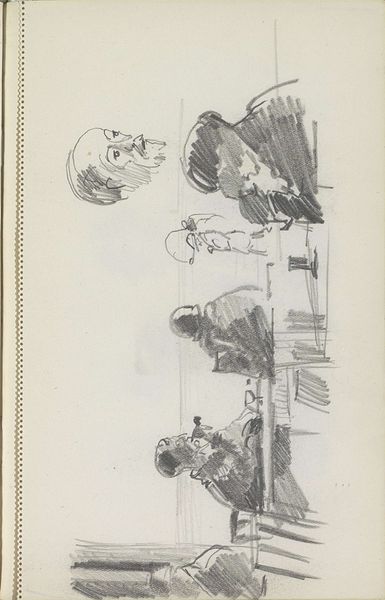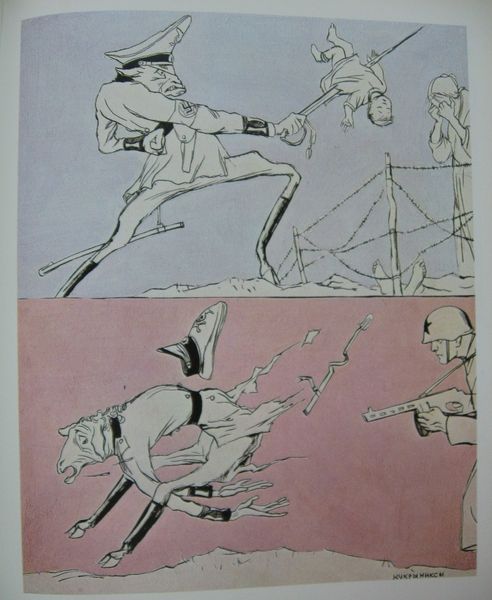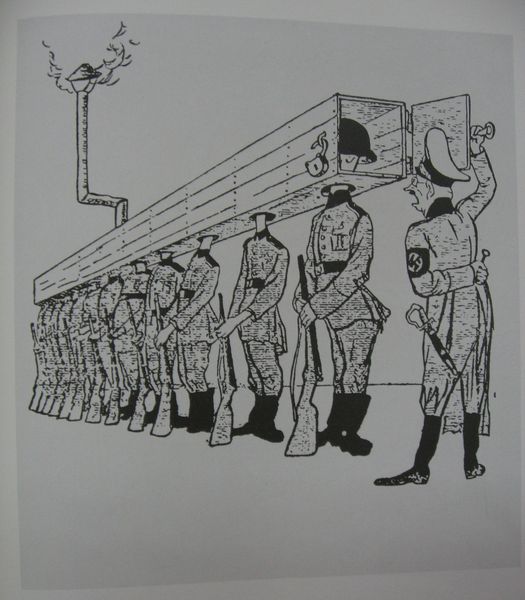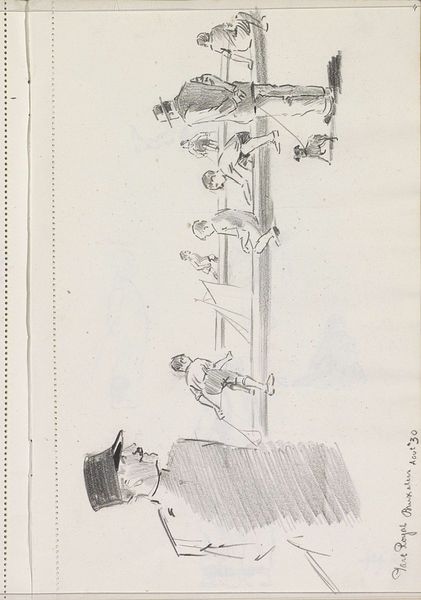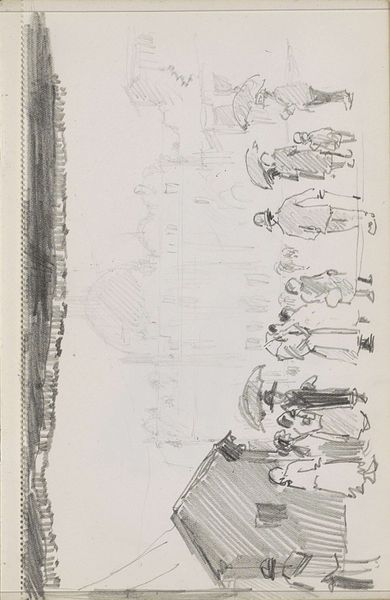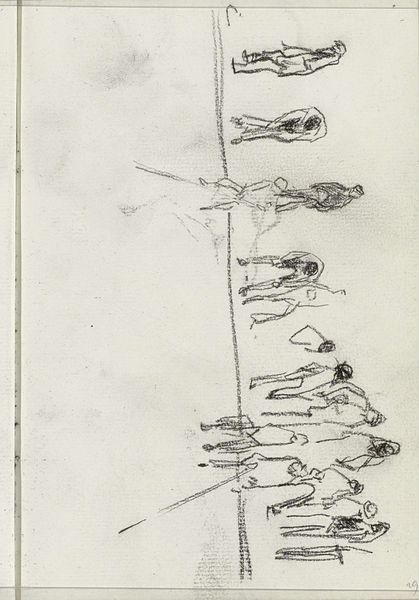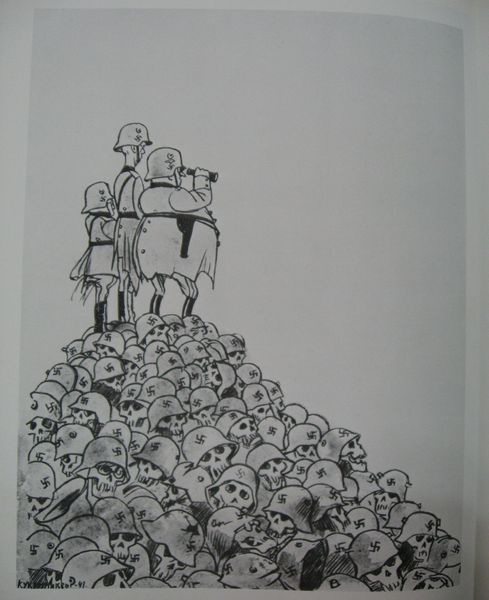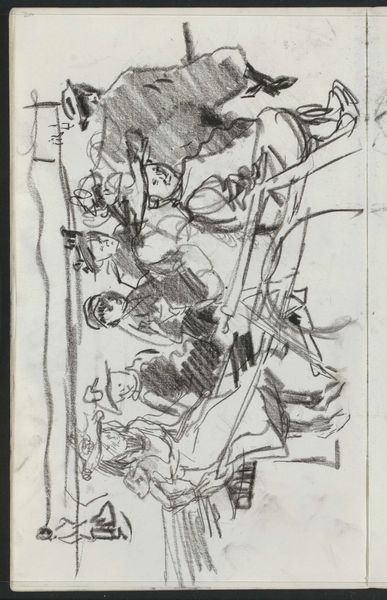
drawing, ink, pen
#
drawing
#
narrative-art
#
caricature
#
soviet-nonconformist-art
#
figuration
#
ink
#
pen
Copyright: Kukryniksy,Fair Use
Editor: This ink and pen drawing, simply titled "Untitled," was created in 1943 by the collaborative group Kukryniksy. There’s such a potent sense of dark humor; it’s unsettling yet almost comical to witness this rather sad scene. How do you interpret this work within its historical context? Curator: I see a pointed commentary on power, ideology, and complicity in this piece. Considering it was made in 1943, during World War II, it invites us to analyze the role of satire as resistance under oppressive regimes, particularly Stalin's Soviet Union, but also Nazi Germany and Fascist Italy. What power dynamics do you observe? Editor: Well, the caricature style seems to dehumanize the figures. And that the person in the carriage is being pulled... it feels almost demeaning. Curator: Exactly. Note how Kukryniksy uses caricature, not just for humor, but as a tool to expose the moral and political bankruptcy of its subjects. We must consider: who is in the coffin, and who is in the procession? Who is holding the figurative pen and who are just standing by as onlookers? What are the ethics of using art to criticize, and how does it reflect on Soviet nonconformist art? Editor: It definitely makes me think about the power of propaganda and the responsibility of artists during wartime. It’s like they’re highlighting how these figures become caricatures of themselves through their actions. Curator: Precisely. By employing visual satire, Kukryniksy provides a critique of totalitarianism, revealing how figures are diminished to mere representations by the systems they uphold, but even this type of criticism existed only within certain established perimeters in Stalin's time. Understanding the artwork requires considering the artist’s tightrope walk between creative expression and political limitations, reminding us how context fundamentally shapes art. Editor: I guess what seemed funny at first glance is a more incisive commentary on power, and its effects, thank you. Curator: A critical engagement with power—both its overt exercise and subtle manipulations— remains more vital than ever, encouraging us to see historical critiques as a blueprint for today.
Comments
No comments
Be the first to comment and join the conversation on the ultimate creative platform.
